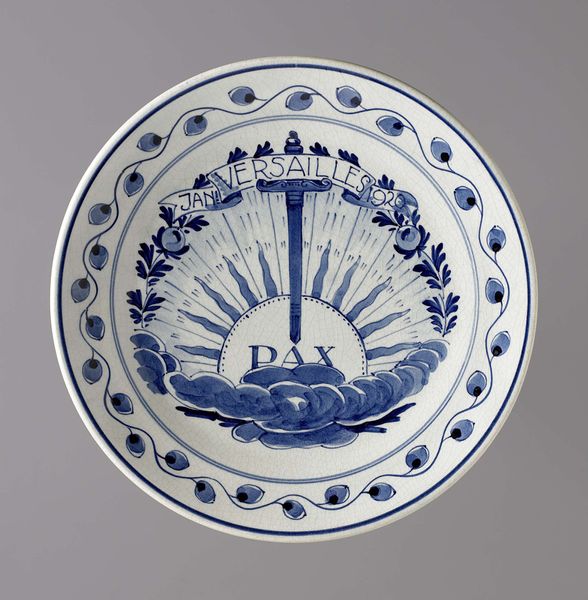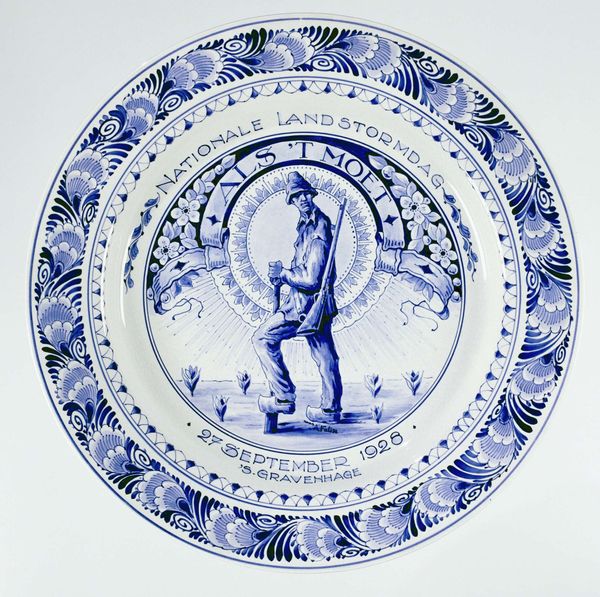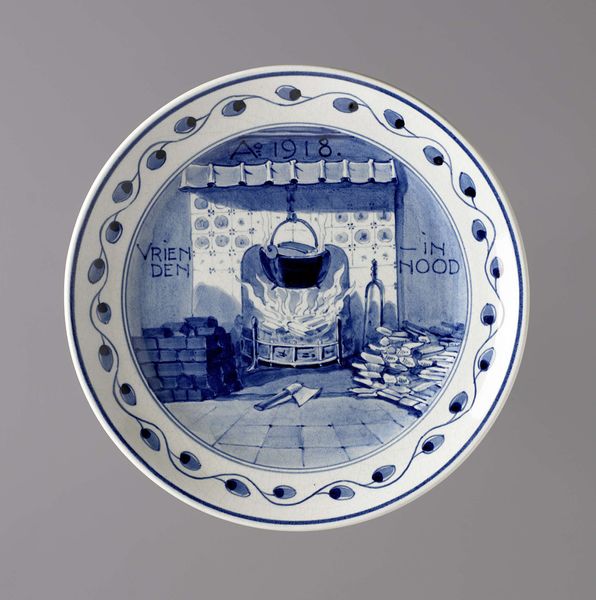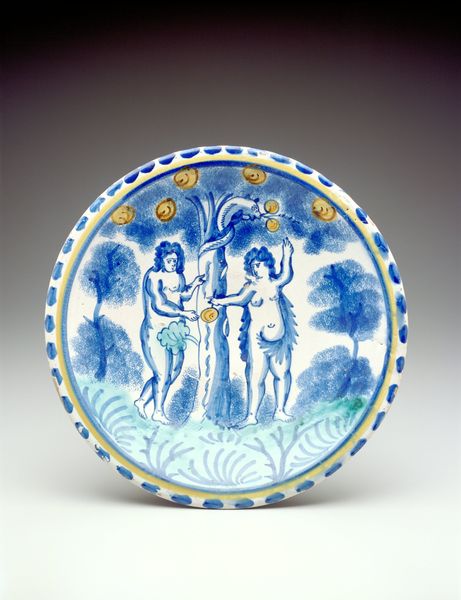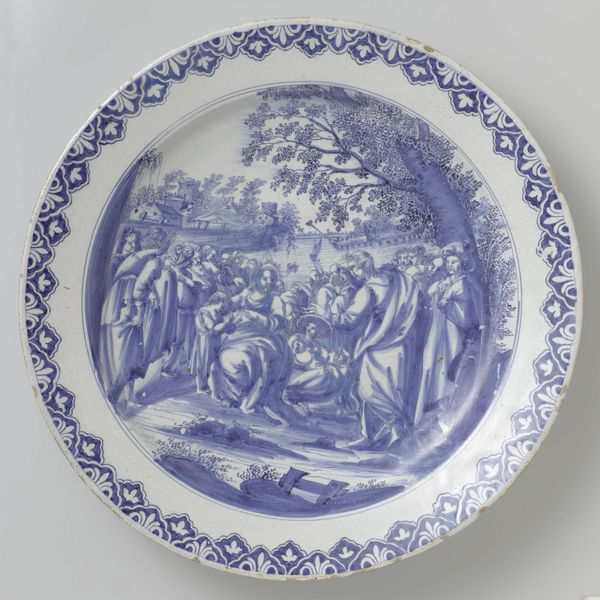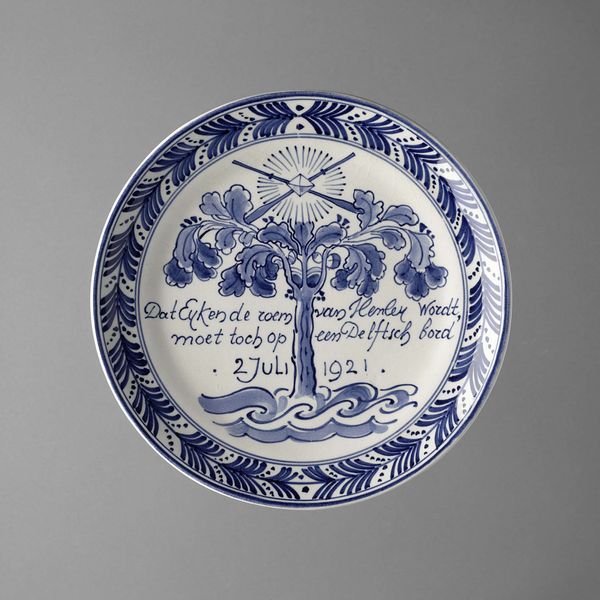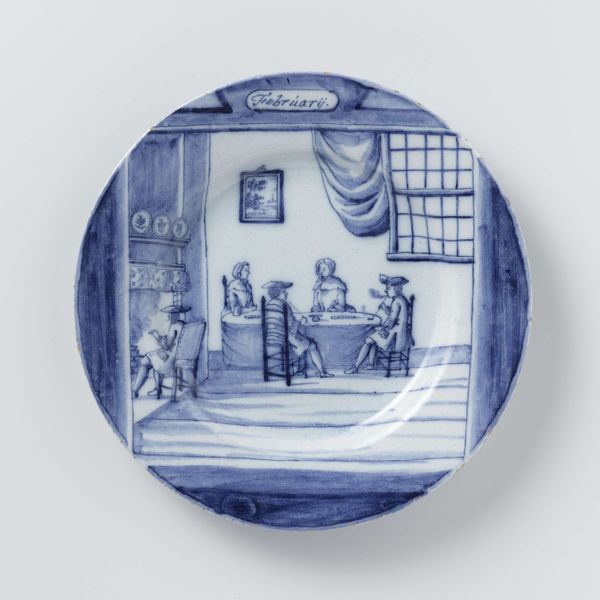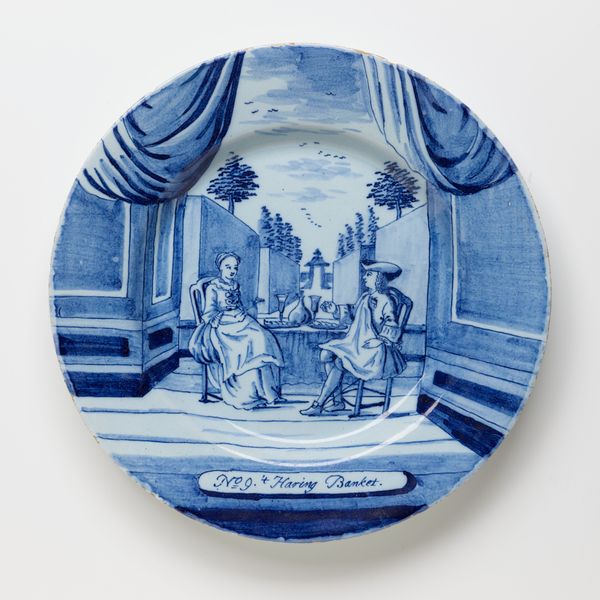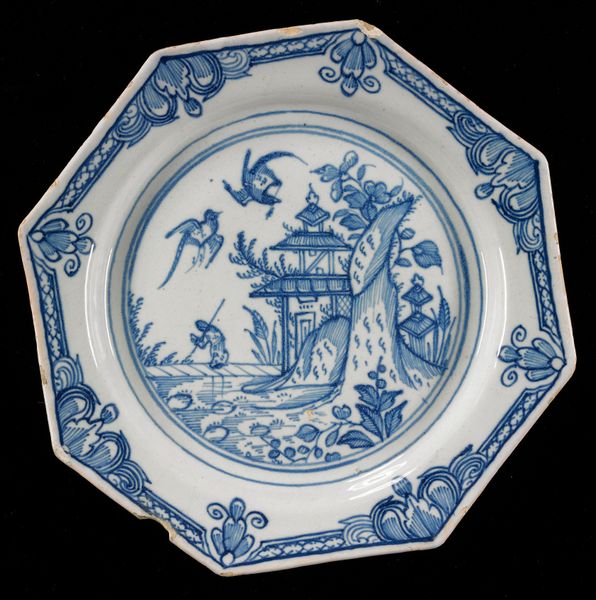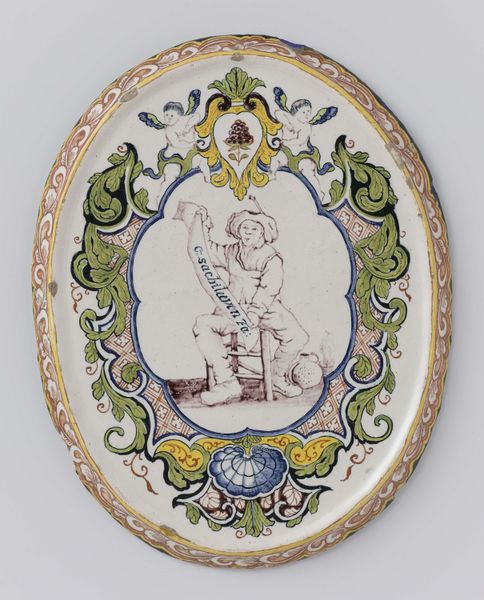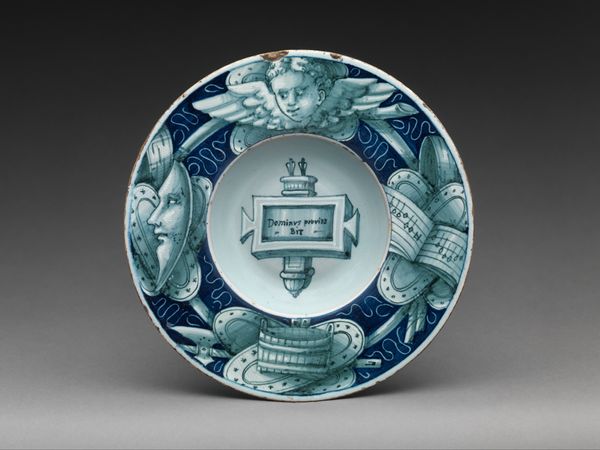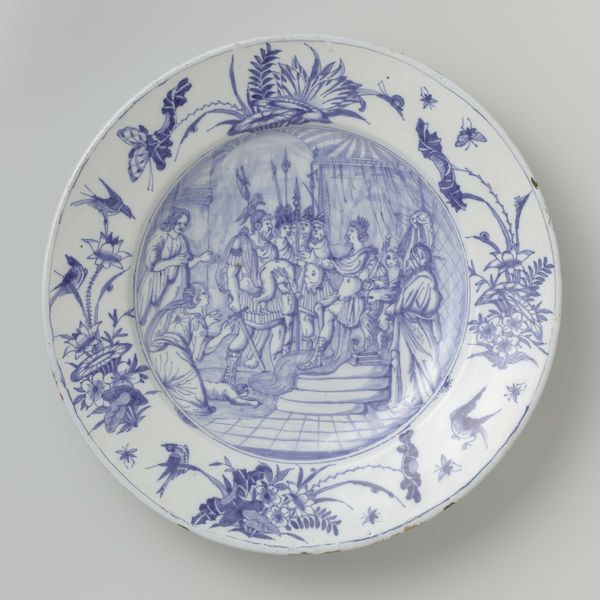
drawing, print, intaglio, ceramic, sculpture
#
portrait
#
drawing
#
decorative element
#
baroque
# print
#
intaglio
#
decorative
#
ceramic
#
figuration
#
sculpture
#
ceramic
#
genre-painting
#
decorative-art
#
decorative art
Dimensions: Overall: 13 × 13 1/2 in. (33 × 34.3 cm)
Copyright: Public Domain
Curator: This Delftware tile, believed to have been crafted between 1701 and 1712, offers us a glimpse into the daily life and aesthetics of the period. Editor: My first impression? A quiet, intimate scene, bathed in a tranquil blue. There's something very calming about it, almost meditative, despite the formal setting. Curator: Absolutely. The piece is steeped in symbolism. The flute player, centered in a classical arrangement, is often interpreted as an allegory for harmony, both musical and social. The act of making music and appreciating art was a sign of nobility, high culture. Editor: It is fascinating how musical instruments historically were associated with status. Thinking about this imagery culturally, who was playing and where are key questions for this art, not only the ‘what’ that we see first. Curator: Indeed. The tiled floor suggests domesticity, yet the drapery and column lend a stage-like quality. It walks a fine line between informal domestic scene and a presentation of elegance, carefully constructed by the artists for popular consumption. Editor: So this 'informal domestic scene' actually played into specific socio-political narratives. Do we know where tiles such as this would have been located? I am curious as to their impact. Curator: Tile-work became integral to home decor, becoming common for wealthier European homes and establishments. This is indicative of Baroque sensibilities; highly ornamental but also meant to celebrate music in everyday settings, reflecting broader access to arts, at least within upper classes. This tile represents more than decoration; it signifies status, and cultural identity for these elites. Editor: So each motif carries not only visual information but encodes narratives and ideologies of the day. The fact it's Delftware – a Dutch imitation of Chinese porcelain, reveals a great deal about trade, cultural exchange, and artistic appropriation as well! Curator: Precisely. This small ceramic piece encapsulates broader cultural narratives of artistry, ambition, and imitation which were the markers of society during that time. It demonstrates an appreciation for the arts but, also demonstrates complex histories that art objects may encapsulate. Editor: Makes you realize that even everyday decoration is communicating values of society for the future to unpack!
Comments
No comments
Be the first to comment and join the conversation on the ultimate creative platform.
